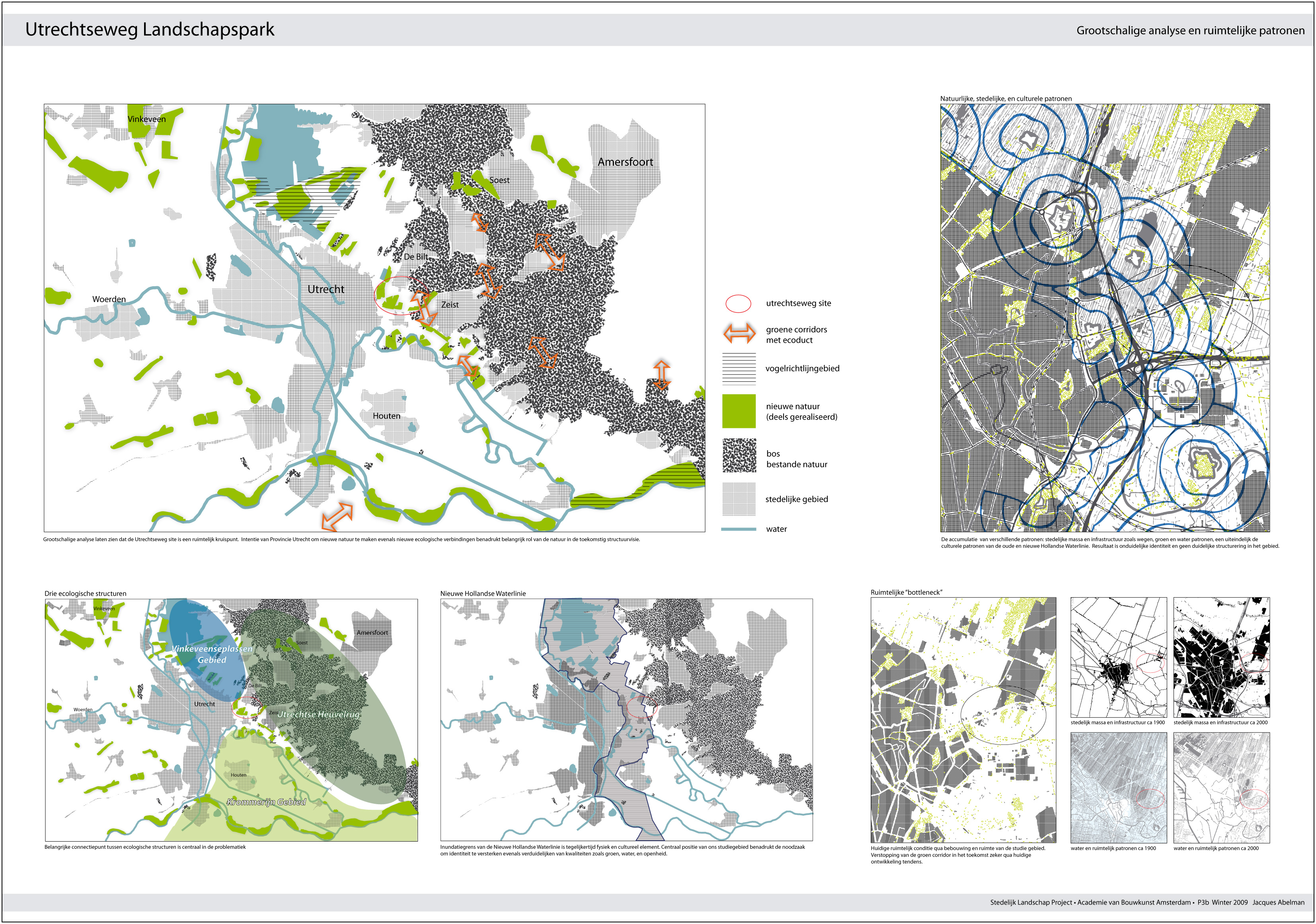Redesigning the urban fringe: culture + ecology = new landscape park for Utrecht’s green ring
8mb PDF_Jacques_Abelman_Landscape Park Proposal
Project Brief from instructor Patrick McCabe ( www.redscape.nl )
Based on the classic Dutch concept of compact city, Utrecht has undergone major transformations in the last ten years. Intensification of urban areas, the realisation of Leidse Rijn (VINEX) and countless large infrastructure projects have been key steps in the city’s ambition to grow. However the benefits of this development are not always evident. On the eastern flank of the city’s margins, a greenbelt area otherwise known as the “Kraag van Utrecht”, is a good example. The area ( about 5km x 5km) is a result is what some might describe as an inconclusive urban condition; a marginal urban landscape sliced into bits and pieces by motorways and train lines, sporadically filled in by so-called green urban functions, a campus, a golf course, new nature, but missing a clear idea for future development. Slowly but surely this green belt is being encroached upon by neighbouring local authorities who are eager to find new building locations for its own inhabitants. The area is rich in history, forming part of the ‘kraag’ or belt of defensive forts, built as part of the New Dutch Waterline. Most of the forts have limited use. It forms part of the important ecological structure of Utrecht as well as housing the Uithof, the city’s university district and centre of learning.
Task
Develop a new vision for this area based on a theme of your choosing, in which the tension between city and landscape is central. Take a stand, form an opinion. The area will transform but why and how? This is your decision. What is your vision for this area? What will it be like when you’re 64? Choose a strategy and demonstrate its potential for change. Search for ways, in which the tension between city and landscape, i.e the border condition, can be transformed to give new interpretations for living, leisure, infrastructure, nature or other activities. What would you like to research? Where would you like to create change? How would you like to transform? Recognise and identify the processes, the often concealed and sometimes unspoken rules of order, the players, and playmakers. Don’t use your creeping common sense, use your intuition.





